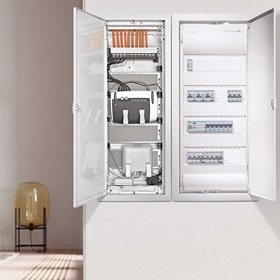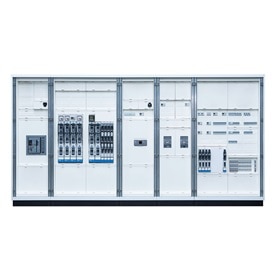Building Information Modeling (BIM)
Hager BIM Objects support the integration of all project data into one digital model and enhances collaboration among stakeholders with consistent transparency throughout the project lifecycle.

BIM – Transforming Construction with Digital Precision
Building Information Modeling, is a methodology supported by software that integrates the planning, construction, and management of buildings. It enables smarter data use, facilitating faster and more sustainable construction.
BIM collects and manages construction-related data throughout a building's lifecycle, serving as an essential information hub for stakeholders like construction companies, architects, engineers, and manufacturers.
This comprehensive visibility enables early conflict detection, improved collaboration, and efficient decision-making. As a result, BIM not only reduces errors and rework but also leads to significant time reductions and cost savings. Its ability to streamline planning, execution, and maintenance makes it an invaluable asset in advancing modern construction practices.
BIM collects and manages construction-related data throughout a building's lifecycle, serving as an essential information hub for stakeholders like construction companies, architects, engineers, and manufacturers.
This comprehensive visibility enables early conflict detection, improved collaboration, and efficient decision-making. As a result, BIM not only reduces errors and rework but also leads to significant time reductions and cost savings. Its ability to streamline planning, execution, and maintenance makes it an invaluable asset in advancing modern construction practices.
“This process will help electrical tradesmen to save time
during installation and maintenance, to plan more
precisely and to generate better results.”
Discover Hager BIM-Objects
Understanding BIM – An Interview with an expert
Frédéric Bastin, BIM Consultant at Hager Group explains how BIM drives digital transformation in construction by enhancing collaboration and streamlining workflows. Discover his insights on the future of building technology and how integrated digital models are reshaping project execution.

Plus points for the construction industry
In digital, three-dimensional models, the trades involved in the construction can adjust their components and test them in interaction. Planners can explore and correct the building‘s functions and dimensions even before the very first excavator has moved in. So, before an air-conditioning engineer and an electrical engineer come to blows on the real construction site, they will have recognised and avoided the danger of collision in the virtual model.
Discover local Hager website
Detailed descriptions of available tools are provided on our local websites. Please note that tool offerings may vary by country.





